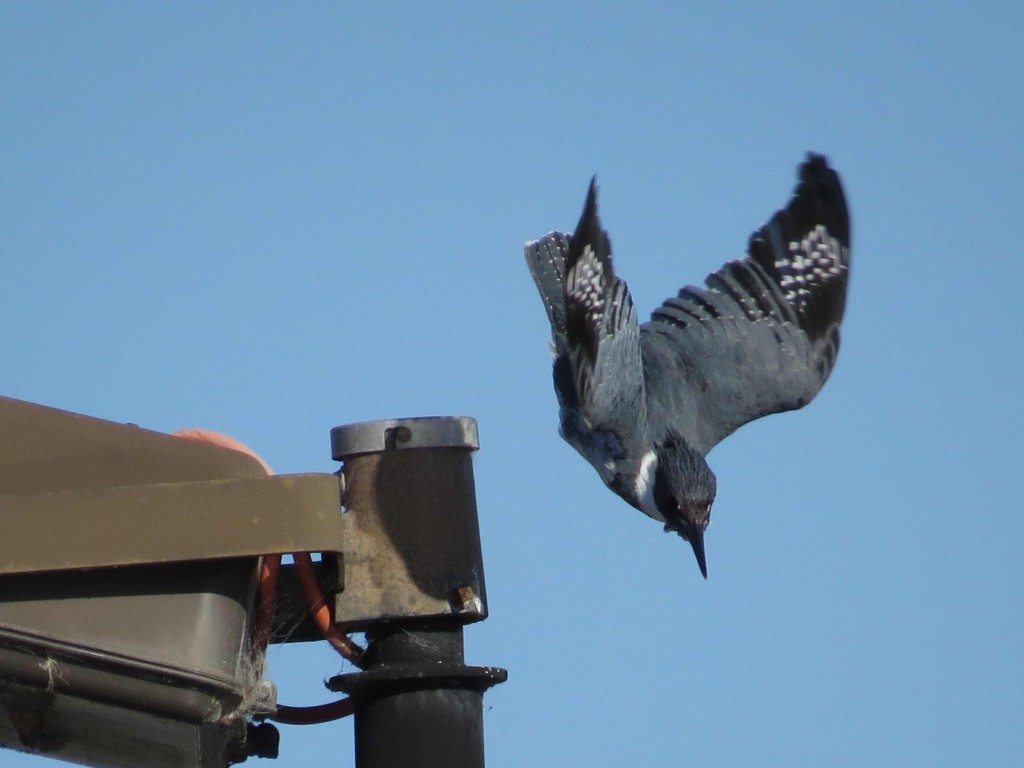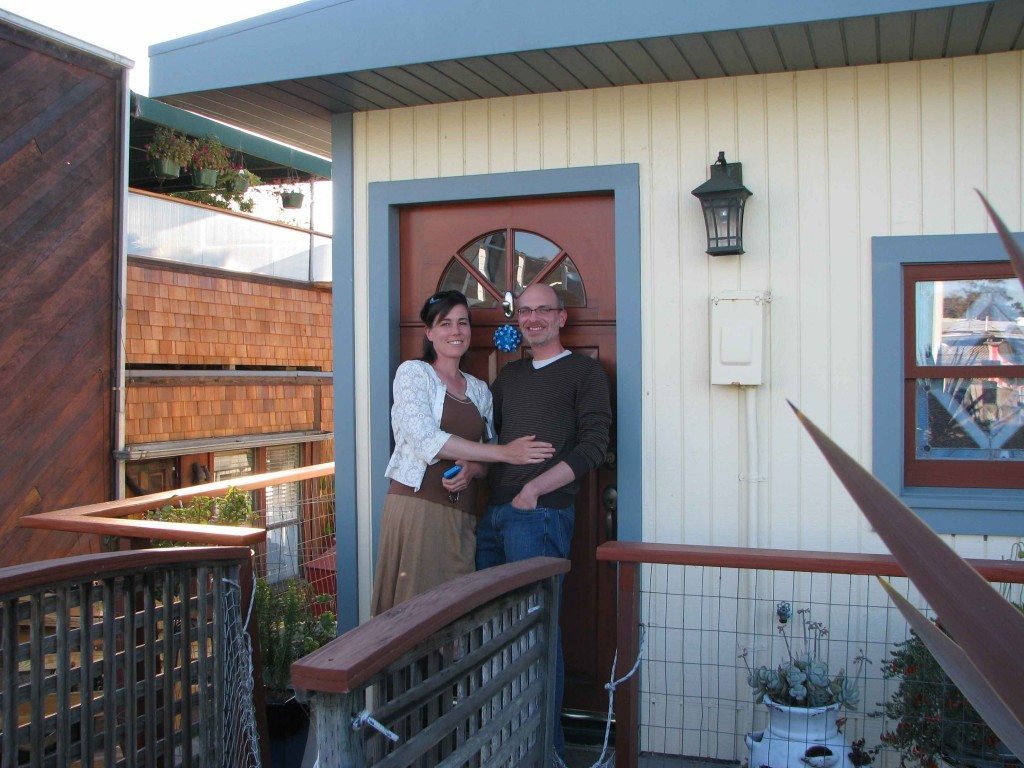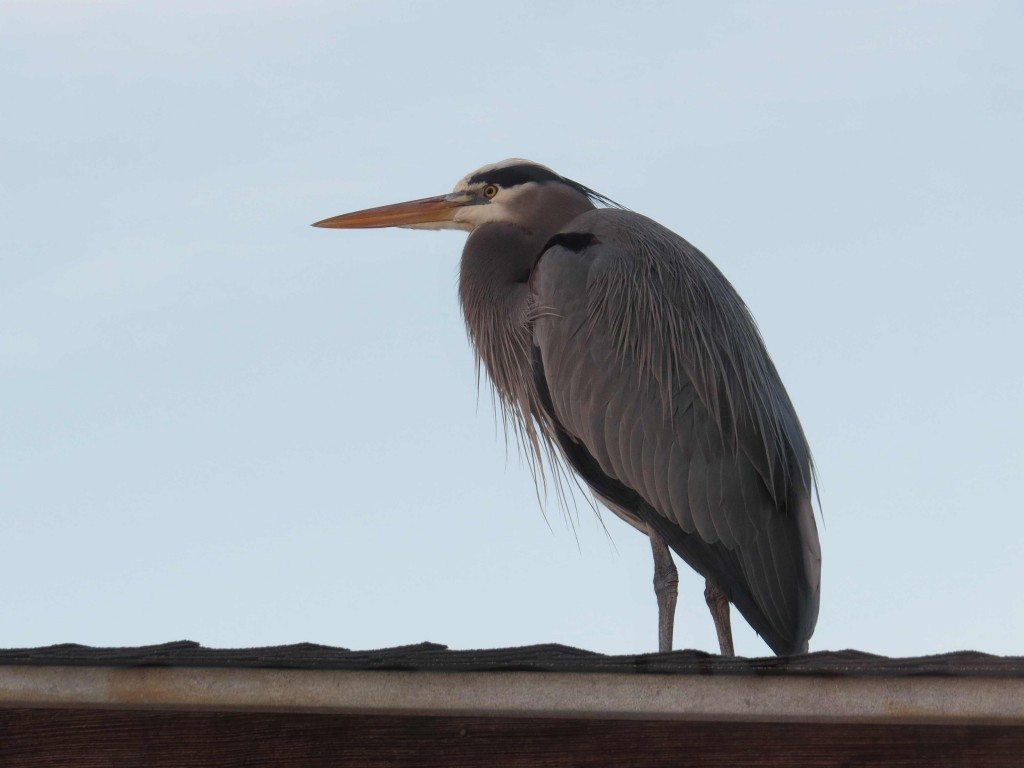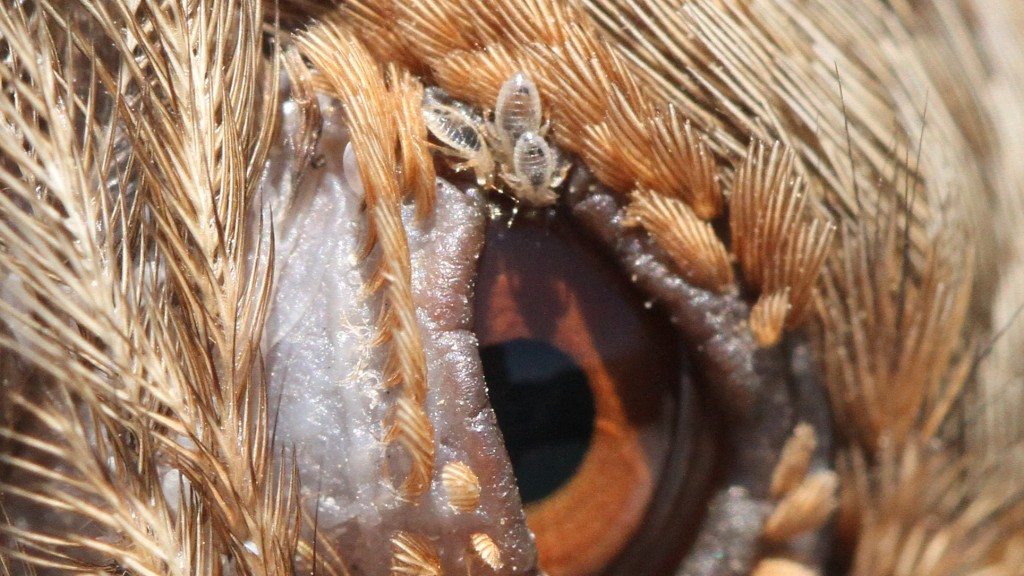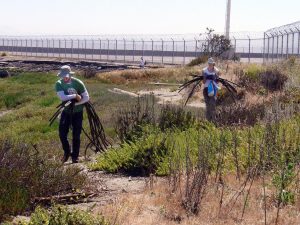A nest tragedy creates a passionate birder
By Annette Litle
It all began with a terrible accident. My husband and I were pruning a camellia that should have been tended to in the fall. As we were picking up the debris to compost, we found a nest on the ground with four screaming nestlings, eyes still unopened.
Horrified, panicked, and crying, with gloved hands I carefully lifted the nest back into the bush. I held vigil to see if the parents would come back, but there was no sign of them. I stayed away from the nest for the next few days in hopes that nature could recover from my carelessness. Finally I checked and the nest was empty.
My sadness at the loss of these babies caused me to start viewing things differently. I began looking in my backyard.
Through the ensuing years, I watched and waited to see who would come visit and perhaps take up residence. One day I spotted an American Robin perched on the fence with a big juicy worm in its beak. Seeing all was safe, she flew into one of our trees to feed her babies. Only then did I hear them. How could a nest have been there all along, right in front of me with wailing babies, and I had still not noticed?
 American Robin nest / Photo by Annette Litle
American Robin nest / Photo by Annette Litle
Learning to be quiet opened up a new world of wonder, teaching me how to look and listen for the birds. For a week my kids and I sat quietly watching the robin fly back and forth caring for the nestlings. It was so exciting to experience this new life materializing in our own backyard. I came outside one morning to check on the robins, only to find the nest had been torn to shreds, one of the babies dead on the ground. A raccoon, maybe?
Again, I was stricken with sadness. This tragedy became an opportunity to teach myself and my children about the importance of respecting our urban wildlife, and about how difficult it is for birds to survive in the city with its predators, including humans. We also worked on letting go of the busy bustle of chores, school and work — all the things that prevent us from experiencing the wonder that is hidden, just slightly, from our eyes and ears.
Next season, I saw some of the activity I had been waiting for.…



